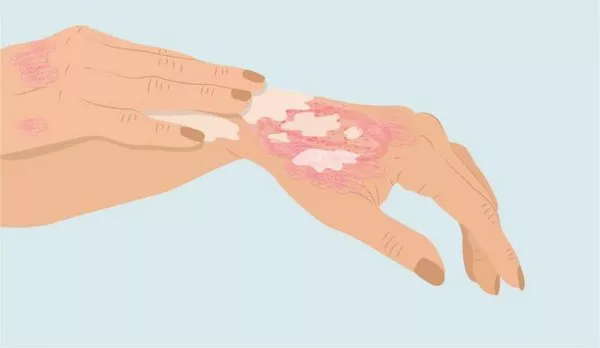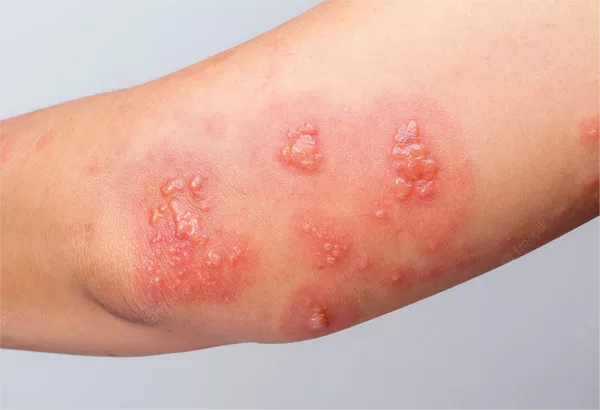Psoriatic arthritis (PsA) is a chronic autoimmune disease that affects millions of people worldwide. It is a form of arthritis that affects some people who have psoriasis—a condition that features red patches of skin topped with silvery scales. Most people develop psoriasis first and are later diagnosed with psoriatic arthritis, but the joint problems can sometimes begin before skin lesions appear. Early diagnosis and treatment are crucial to managing symptoms and preventing joint damage, making it essential to recognize the early signs of psoriatic arthritis.
Understanding Psoriatic Arthritis
Psoriatic arthritis is an inflammatory form of arthritis that can affect the joints and connective tissues. It typically occurs in individuals with psoriasis, though not exclusively. PsA can cause pain, swelling, and stiffness in the joints, and its severity can range from mild to severe. If left untreated, psoriatic arthritis can lead to permanent joint damage and disability. Understanding and identifying the early signs of psoriatic arthritis is vital for effective management and treatment.
Early Signs and Symptoms
The early signs of psoriatic arthritis can be subtle and vary significantly from one person to another. Recognizing these symptoms early can help in seeking medical attention promptly. The following are some of the most common early indicators of psoriatic arthritis:
1. Joint Pain and Stiffness
One of the hallmark symptoms of psoriatic arthritis is joint pain and stiffness. This pain can affect any joint in the body, including the fingers, toes, knees, and spine. The pain and stiffness are often worse in the morning or after periods of inactivity. The stiffness may last for several hours and can be accompanied by a feeling of warmth in the affected joints.
SEE ALSO: The 5 Best Dry Shampoos for Psoriasis
2. Swelling and Tenderness
Swelling and tenderness in the joints are also common early signs of psoriatic arthritis. The swelling may be noticeable and can cause the joints to appear larger than usual. This can be particularly evident in the fingers and toes, where the swelling can cause a sausage-like appearance, known as dactylitis. The affected joints may be tender to the touch, and this tenderness can persist even when the joint is not being used.
3. Redness and Warmth
Inflammation associated with psoriatic arthritis can cause redness and warmth in the affected joints. This is due to the increased blood flow to the inflamed area. The skin over the joint may appear red or discolored, and the joint itself may feel warm to the touch. These symptoms can be particularly noticeable during flare-ups of the condition.
4. Reduced Range of Motion
Psoriatic arthritis can lead to a reduced range of motion in the affected joints. This can make it difficult to perform everyday tasks, such as bending, reaching, or gripping objects. The stiffness and swelling in the joints can limit movement and flexibility, which can affect the overall quality of life.
5. Fatigue
Fatigue is a common symptom of many autoimmune diseases, including psoriatic arthritis. The chronic inflammation and immune system activity associated with PsA can lead to persistent feelings of tiredness and exhaustion. This fatigue can be debilitating and may not improve with rest or sleep.
6. Nail Changes
Psoriatic arthritis can cause changes in the nails, which can be an early indicator of the condition. These changes can include pitting (small depressions in the nails), ridging, thickening, and discoloration. The nails may also become separated from the nail bed, a condition known as onycholysis. Nail changes are often seen in individuals with psoriasis and can be an important clue in diagnosing psoriatic arthritis.
7. Eye Problems
Eye problems are another potential early sign of psoriatic arthritis. These can include redness, pain, and inflammation in the eyes, a condition known as uveitis. Uveitis can cause blurred vision and light sensitivity and can lead to complications if not treated promptly. Individuals with psoriatic arthritis may also experience dry eyes and other eye-related symptoms.
8. Enthesitis
Enthesitis is the inflammation of the entheses, the points where tendons or ligaments attach to the bone. This inflammation can cause pain and tenderness in areas such as the heels, the bottoms of the feet, and the elbows. Enthesitis is a distinctive feature of psoriatic arthritis and can help differentiate it from other forms of arthritis.
Diagnosing Psoriatic Arthritis
Diagnosing psoriatic arthritis can be challenging, as its symptoms often overlap with other types of arthritis, such as rheumatoid arthritis and osteoarthritis. A comprehensive evaluation by a healthcare professional is necessary to accurately diagnose the condition. This evaluation may include:
SEE ALSO: The 5 Best Tar Shampoos for Psoriasis
1. Medical History and Physical Examination
A thorough medical history and physical examination are the first steps in diagnosing psoriatic arthritis. The healthcare provider will ask about the patient’s symptoms, family history of psoriasis or arthritis, and any other relevant health information. During the physical examination, the provider will look for signs of joint inflammation, swelling, and tenderness, as well as skin and nail changes.
2. Blood Tests
Blood tests can help rule out other types of arthritis and identify markers of inflammation. Common blood tests for diagnosing psoriatic arthritis include:
- Erythrocyte Sedimentation Rate (ESR): This test measures the rate at which red blood cells settle at the bottom of a test tube. An elevated ESR indicates inflammation in the body.
- C-Reactive Protein (CRP): This test measures the level of CRP, a protein produced by the liver in response to inflammation. Elevated CRP levels suggest active inflammation.
- Rheumatoid Factor (RF) and Anti-Cyclic Citrullinated Peptide (anti-CCP) Antibodies: These tests help rule out rheumatoid arthritis, as RF and anti-CCP antibodies are typically present in individuals with rheumatoid arthritis but not in those with psoriatic arthritis.
3. Imaging Studies
Imaging studies, such as X-rays, MRI, and ultrasound, can provide detailed images of the joints and help identify signs of inflammation, joint damage, and bone changes. These studies can help differentiate psoriatic arthritis from other types of arthritis and assess the severity of the condition.
4. Joint Aspiration
In some cases, a healthcare provider may perform a joint aspiration, which involves using a needle to withdraw a small amount of fluid from an affected joint. This fluid is then analyzed for signs of inflammation, infection, or crystals that could indicate other types of arthritis, such as gout.
Managing Psoriatic Arthritis
Early diagnosis and treatment of psoriatic arthritis are crucial to managing the condition and preventing joint damage. Treatment options for psoriatic arthritis may include:
1. Medications
Medications are the cornerstone of psoriatic arthritis treatment and can help reduce inflammation, relieve pain, and slow disease progression. Common medications used to treat PsA include:
- Nonsteroidal Anti-Inflammatory Drugs (NSAIDs): These medications, such as ibuprofen and naproxen, can help reduce pain and inflammation.
- Disease-Modifying Antirheumatic Drugs (DMARDs): DMARDs, such as methotrexate and sulfasalazine, can help slow disease progression and prevent joint damage.
- Biologic Agents: Biologic agents, such as tumor necrosis factor (TNF) inhibitors and interleukin (IL) inhibitors, target specific components of the immune system to reduce inflammation and prevent joint damage.
- Corticosteroids: Corticosteroids, such as prednisone, can be used to reduce inflammation and control symptoms during flare-ups.
2. Physical Therapy
Physical therapy can help improve joint function, increase range of motion, and strengthen the muscles around the affected joints. A physical therapist can design a personalized exercise program to help manage symptoms and improve overall physical function.
3. Lifestyle Modifications
Lifestyle modifications can play an important role in managing psoriatic arthritis. These may include:
- Maintaining a Healthy Weight: Excess weight can put additional stress on the joints, exacerbating symptoms. Maintaining a healthy weight can help reduce this stress and improve overall joint health.
- Regular Exercise: Regular exercise can help improve joint flexibility, reduce pain, and enhance overall physical health. Low-impact exercises, such as swimming, walking, and yoga, are particularly beneficial for individuals with psoriatic arthritis.
- Healthy Diet: A balanced diet rich in fruits, vegetables, lean proteins, and healthy fats can help reduce inflammation and support overall health. Some individuals with psoriatic arthritis find that certain foods can trigger flare-ups, so it may be helpful to keep a food diary and identify any potential triggers.
- Stress Management: Stress can exacerbate symptoms of psoriatic arthritis. Practicing stress management techniques, such as meditation, deep breathing, and mindfulness, can help reduce stress and improve overall well-being.
4. Support and Education
Living with psoriatic arthritis can be challenging, and it is important to seek support and education. Joining support groups, both in-person and online, can provide valuable information, resources, and emotional support. Education about the condition can also help individuals better understand their symptoms, treatment options, and strategies for managing the disease.
Conclusion
Psoriatic arthritis is a chronic autoimmune disease that can cause significant joint pain, swelling, and stiffness. Recognizing the early signs of psoriatic arthritis is crucial for seeking prompt medical attention and initiating appropriate treatment. Early symptoms may include joint pain and stiffness, swelling and tenderness, redness and warmth, reduced range of motion, fatigue, nail changes, eye problems, and enthesitis. Accurate diagnosis often requires a comprehensive evaluation, including medical history, physical examination, blood tests, imaging studies, and joint aspiration.
Effective management of psoriatic arthritis involves a combination of medications, physical therapy, lifestyle modifications, and support. Early diagnosis and treatment are essential to prevent joint damage and improve the overall health.
Related Topics:

























